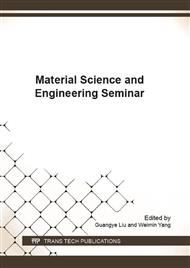p.3
p.9
p.14
p.22
p.27
p.32
p.38
p.47
Effects of Foaming Temperature on Super Light Particles of Polypropylene Prepared by Batch Method
Abstract:
Super light micro foam particles of isotactic polypropylene (IPP) is prepared by the process of rapid evaporation method. The experiment uses three different heating methods which are oven, water bath and glycerol bath, respectively. The IPP’s foaming temperature is also different. The density of micro foam particles is tested. As a result, the micro foam IPP of different density and corresponding foaming temperature range can be got. The density of micro foam particles is reduced 32% than original particles. The IPP’s characteristics of micro foamed are described on different foaming temperature and different heating methods. At the same time, the reasons of different characteristics are also explained.
Info:
Periodical:
Pages:
22-26
Citation:
Online since:
November 2016
Authors:
Keywords:
Price:
Сopyright:
© 2017 Trans Tech Publications Ltd. All Rights Reserved
Share:
Citation:


